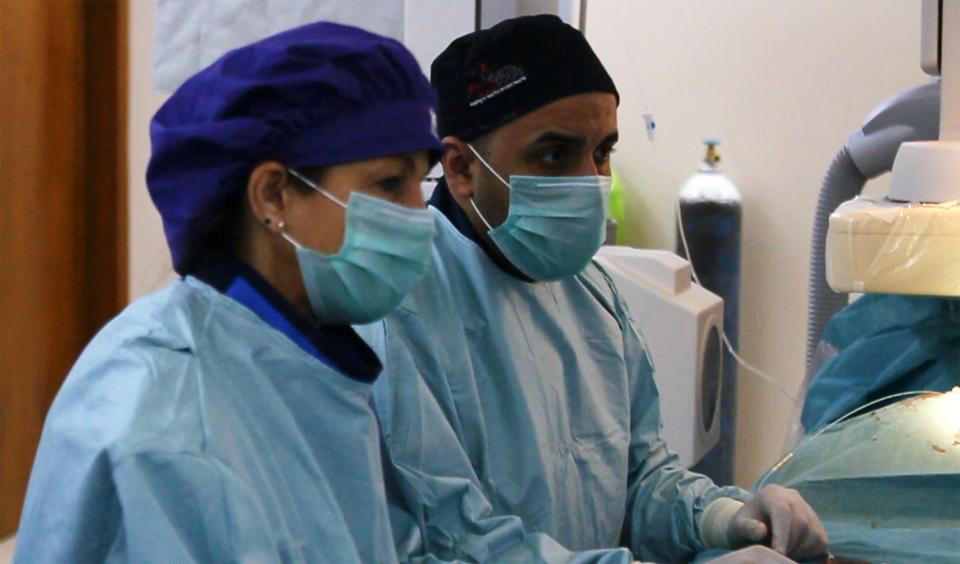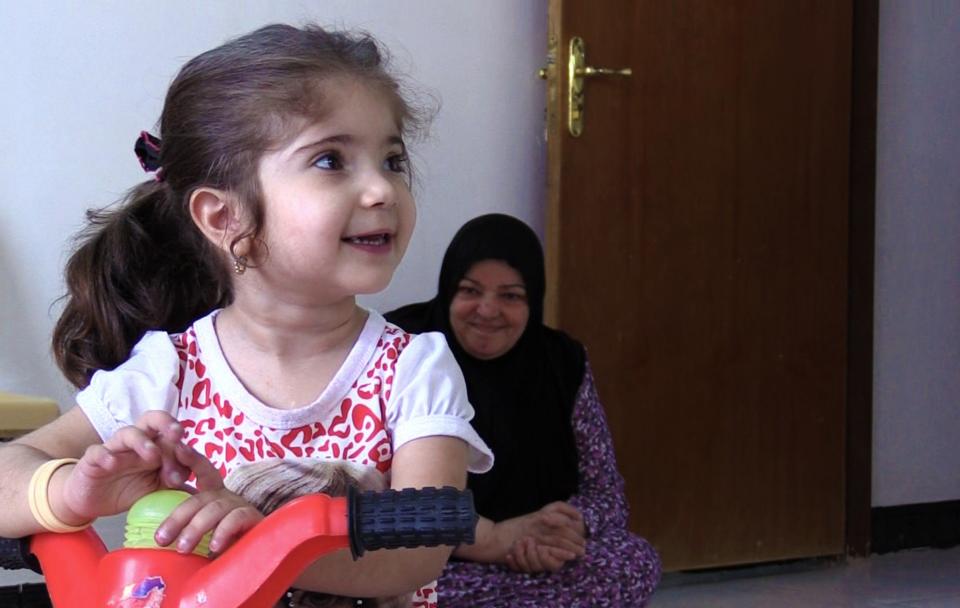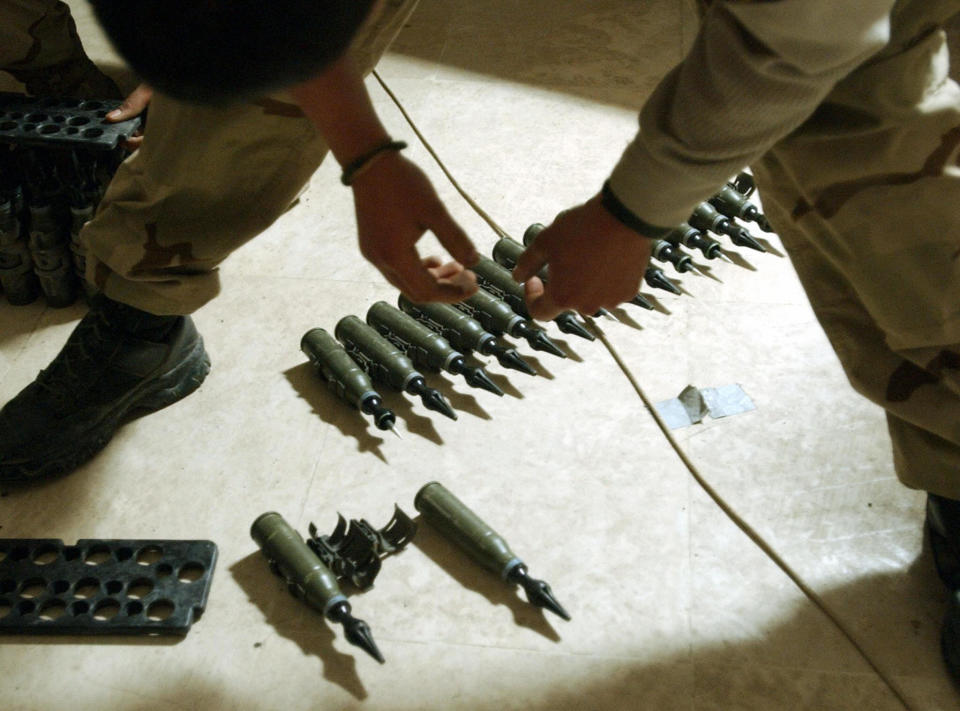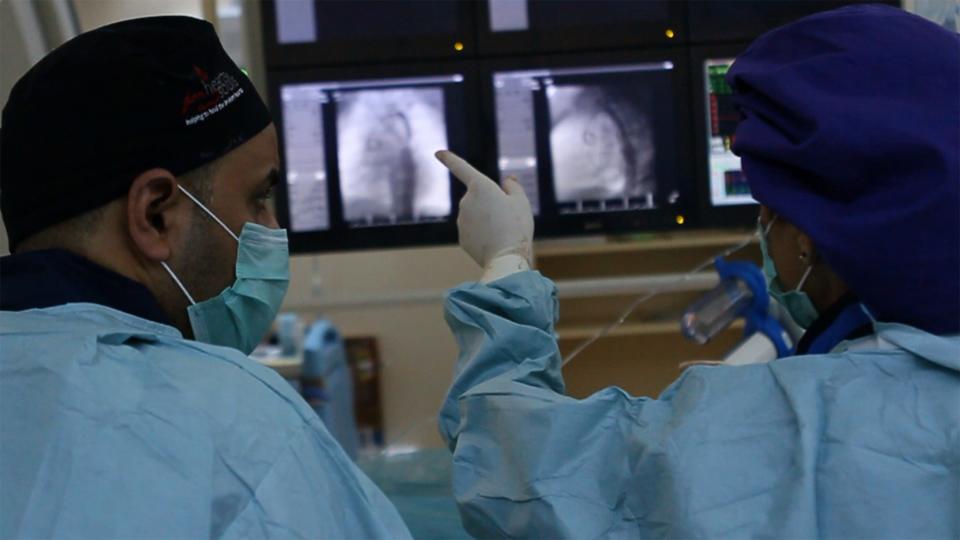A doctor battles to save babies from Fallujah’s toxic legacy
Article written by Ash Gallagher for Yahoo News

The Iraqi Army has claimed victory in Fallujah after driving out most of the Islamic State militants. As of Monday morning, fighting continued along the main road into the city and counterterrorism forces had surrounded Fallujah’s main hospital after militants set it on fire.
But Fallujah has been a war zone for more than a decade. In 2004, the United States sent in troops twice following the grisly deaths of four American contractors whose bodies were burned after they were captured and executed by insurgents.
Slideshow: The battle for Fallujah, Iraq >>>
The warfare has resulted in over tens of thousands of deaths. The casualties have brought Iraq’s doctors face to face with some of the worst physical defects. For Firas al-Kubaisy, a pediatric cardiac surgeon, the past decade of war has had a traumatizing effect.
Kubaisy, who was born in Fallujah, now lives and works mostly in Baghdad. Since 2004, he has seen some of the most extreme congenital heart conditions, involving severe and often fatal deformities.
In an interview with Yahoo News, he explained that when he returned to his home city to screen patients nearly three years after the U.S. invasion of Iraq, the battle between Sunni and Shiite militias was heating up. What he saw left him dumbfounded — heart-related conditions he was seeing for the first time, that he “hadn’t read [about] in the books. There were strange cases from Fallujah.”
It started with a patient, a child whose frail and small body was blue from lack of oxygen. The baby had been born with transposition of the great arteries, a condition in which the two main arteries leading from the heart are switched.
What Kubaisy described next could only come from the script of a horror movie: “Deformities from the outside. We had cases, we call anencephaly, which means the cup of the head is not there and the brain is small. And there were what we called ‘Cyclops,’ which is very rare, which is a single eye in the middle where the nose is above the eye and the mouth is, well, there was no mouth.”
Most of the children he treated had died, he said. They were delivered, documented and buried.
He was aware of many babies whose births were not even documented and whom he never treated because they were from poor families.
Blood tests for the mothers were also difficult. “We don’t have the facilities, we didn’t have the mothers for follow-up visits,” Kubaisy explained.
The Fallujah hospital has been bombed many times over the last decade. Kubaisy recalled one instance after 2008 when his ward was hit while he performed an operation. “I was doing an echo [cardiogram] for a child, and then you hear that … [sound], and then the ceiling is just over you, and there was just a lot of dust and there was a lot of injured. And you are looking everywhere, there is a lot of blood everywhere, and … we keep going.”
It has been difficult over the years for Fallujah’s doctors to treat patients, perform tests and operate because their facilities have been targeted and they have been left with little or no resources.
The most common congenital anomaly Kubaisy has seen in children is cyanosis, the appearance of blue limbs or faces from a lack of oxygen or inadequate circulation.
Three-year-old Noor Katim is one of those patients. She is small for her age, shy and anxious.

Her family left Fallujah and now lives in Halabja, in northern Iraq. They invited Yahoo News to visit. Her father, Muhammed Katim, 20, explained, “They found a hole in her heart and said she had a tight valve. They found she had a lack of calcium.”
After Noor was diagnosed, a hospital committee came to review her case. It determined she needed surgery, which could not be provided in Iraq, so it was recommended that she be treated in South Korea and, later, India.
But the surgeries haven’t been enough. When Noor gets excited or upset, her small fingers, toes and lips turn a deep shade of purple. The family has not been able to receive further support and struggles to do what it can to keep her stable.
In 2011, a relief and developmental organization, Preemptive Love Coalition (PLC), started sending doctors into Fallujah to assist Kubaisy and his colleagues in operations and to train new doctors.
Founder Jeremy Courtney told Yahoo News that when his organization went in for the first time, they were determined to help every child they could. “These children were in need of lifesaving surgeries as a result of someone else’s violence.”
The PLC teams began to notice patients suffering from what appeared to be ”environmental fallout,” Courtney said, leading to “thousands of children being born with birth defects, which were taking their life or significantly curtailed the quality [of it].”
Kubaisy and his colleagues were convinced the deformities came from materials used in American weapons.
He had hoped to bring in his own researchers, and he approached an American doctor for assistance. “I remember his words,” Kubaisy said. “[He said] if we do such research, it will cost the American government millions of dollars.”
Nevertheless, one of Kubaisy’s colleagues who also operated in Fallujah — and who did not wish to be named for security reasons — conducted individual studies, one from November 2009 to October 2010. The doctor found that out of 291 babies born, over 150 of them had some form of congenital disease or deformation. In another study in 2011, hair samples were taken from around 25 parents, and what appeared to be uranium contamination was found.
But there has been no definitive finding by any government or international organization.
The U.S. military in Iraq used munitions containing depleted uranium, a byproduct of uranium enrichment that is much heavier and denser than lead and can penetrate armor or hardened targets. It is radioactive, although not on the scale of a nuclear bomb, and public health and anti-war groups have protested its use.

The International Coalition to Ban Uranium Weapons is a group of experts who have worked to bring attention to the issue.
Yahoo News spoke with coordinator Doug Weir, who said one of the greatest problems he found was the “lack of transparency from governments” that use weapons containing depleted uranium. “Often, [government officials] are reluctant to release coordinates for where the weapons are used or acknowledge they used them in conflict,” he said.
“It’s much easier to do [a study] with explosive weapons or something where you lose an arm or a limb, but when it’s environmental pollutants, it’s very difficult,” Weir continued.
Yahoo News asked the U.S. State Department for comment on the use of depleted uranium in Iraq and whether the issue had been studied in terms of its public health impact, but we did not receive a response.
Still trying to save the lives of infants, Kubaisy continued to travel to Fallujah through November 2014, after ISIS took over the city. The militants allowed him to enter and screen patients, but because hospitals had been destroyed and resources were scarce, there wasn’t much he could offer.

ISIS has since been accused of releasing mustard gas, but it hasn’t been confirmed. Weir says that with each “new conflict in Fallujah, it’s just more pollution being layered on.”
After decades of warfare, Fallujah, cast in the center of ideological struggles, has become a wasteland of toxic materials affecting hundreds of thousands.
But Kubaisy says he’ll keep going. “My father was a doctor; I have to complete his mission. I love the children; I suffer when they suffer.”
With Fallujah’s hospital likely destroyed, the good doctor can only hope the infrastructure will be rebuilt to save the next generation of children from the crippling toxins many hope won’t infect their chance for a future.

